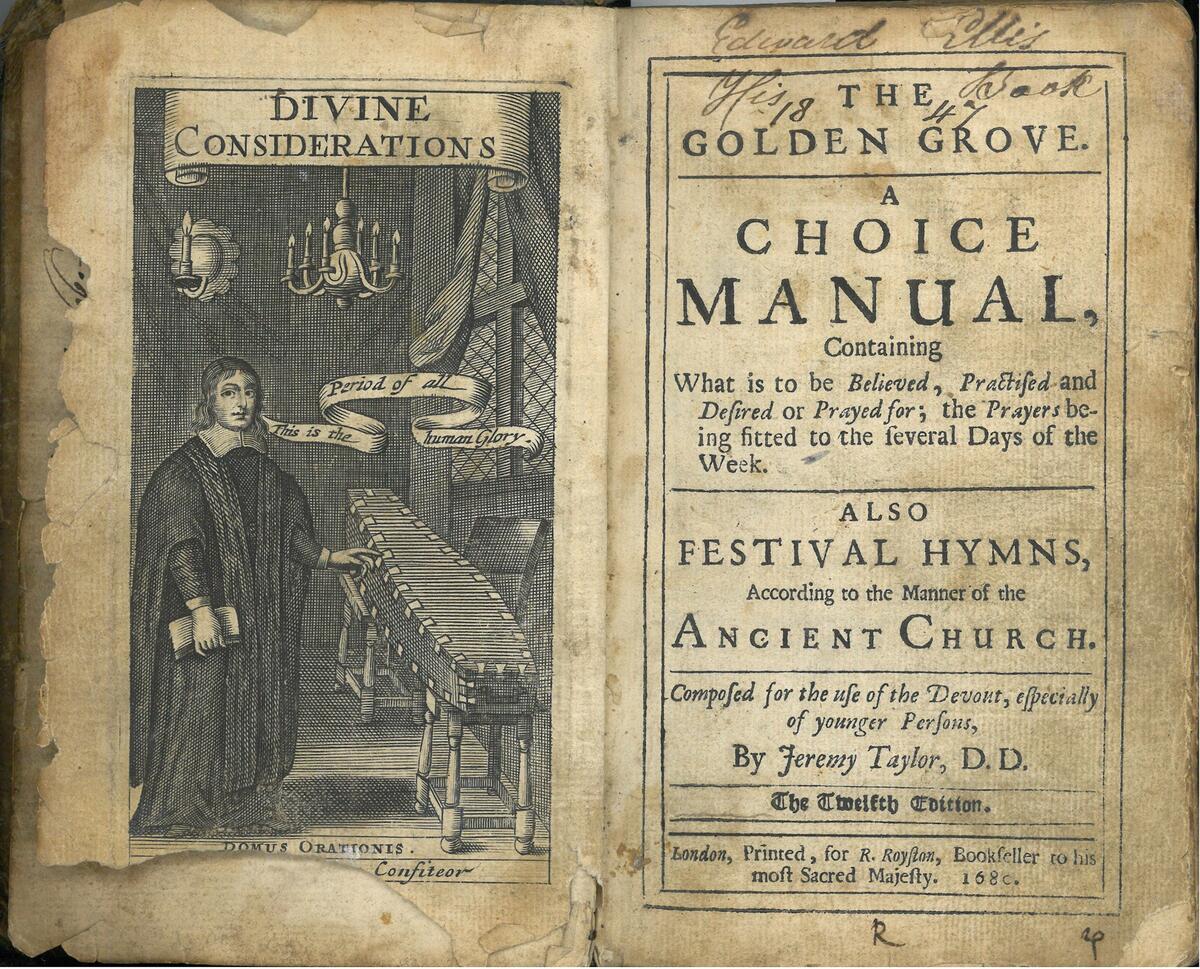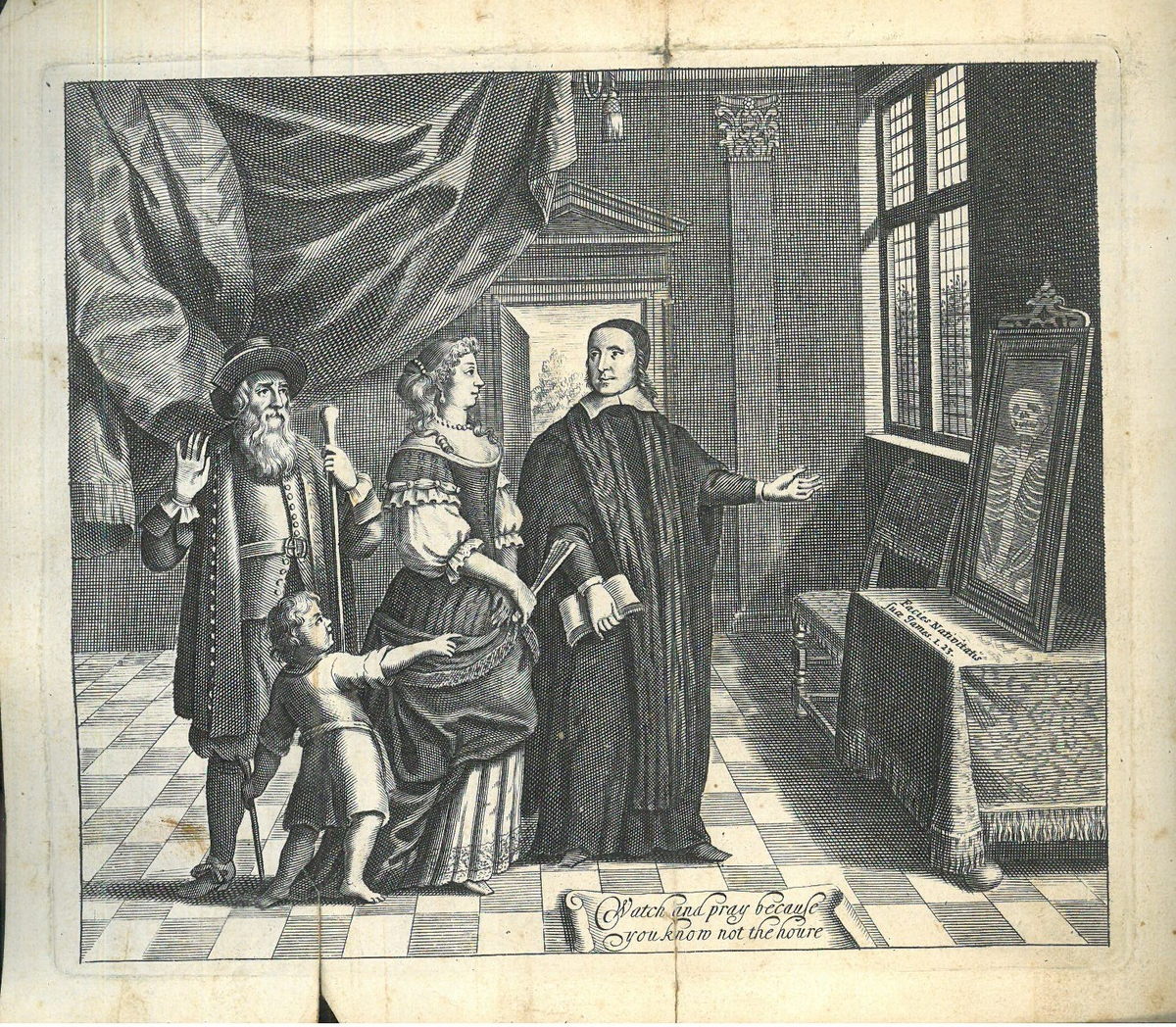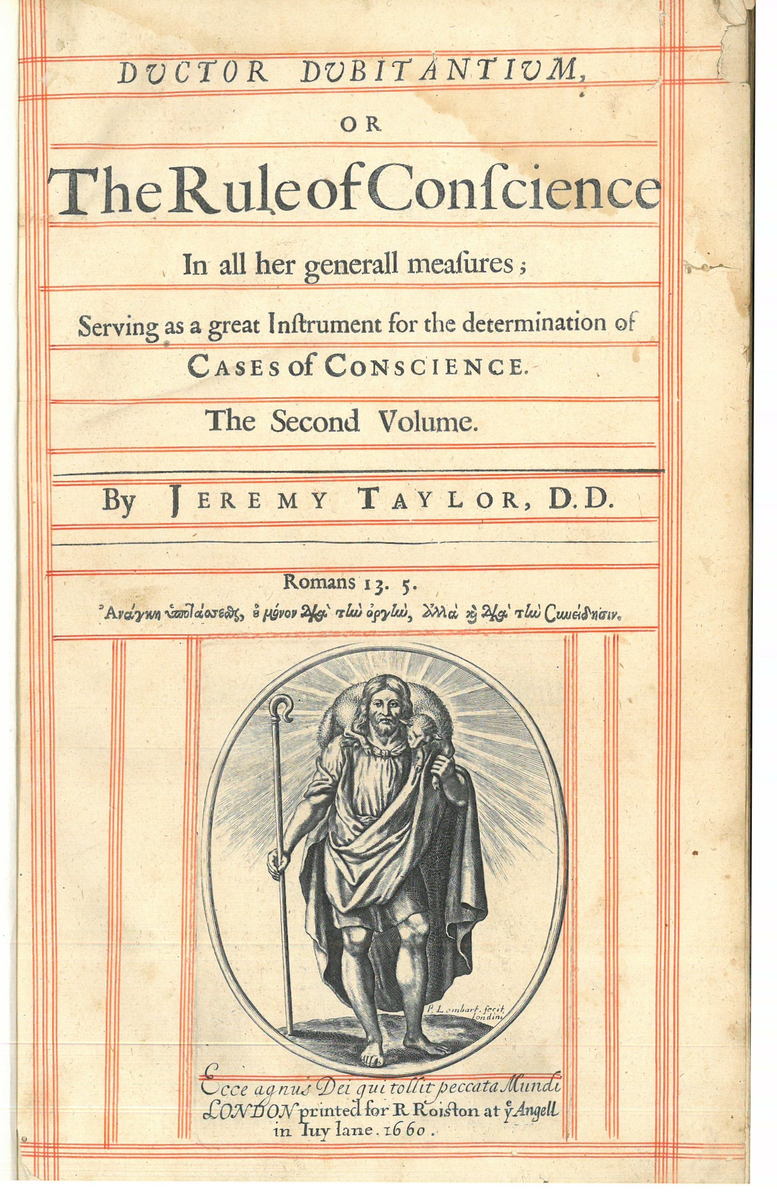Jeremy Taylor and his illustrators
In his dedicatory preface to Holy Dying, Jeremy Taylor wrote to his patron Richard Vaughan, Earl of Carbery, “My Lord, I have lived to see religion painted upon banners and thrust out of churches”. Although he was writing in light of the tumultuous events of the Civil War those words might have their parallel in the dreadful circumstances of the past few months, where we have seen our national churches closed to the public for the first time in centuries, and substitute banners offered through electronic media like Zoom and Facebook. And yet despite the vicissitudes of life during the terrible times of the Civil War Taylor was able to produce some of his best and most important writings then and these still provide guidance and consolation for us in the difficult pandemic riven world of today, along with some interesting illustrations.

Taylor was born and educated in Cambridge and became a priest in the 1630’s. However, he was associated with the Royalist cause during the Civil War and captured by Parliamentary forces outside Cardigan Castle in early 1645. Later that decade he became chaplain to Richard Vaughan at Golden Grove in Carmarthenshire, the house providing the title for one of his popular manuals of devotion, which first appeared in 1655. The Rule and Exercises of Holy Living (1650) and Holy Dying (1651) were two of his most influential works, reprinted across the centuries. Reflections such as – “God has appointed one remedy for all the evils of the world and that is a contented spirit”, or “there is some virtue or other to be exercised, whatever happens”, will provide consolation and inspiration for many today.
It is also interesting to look at the way in which artists and engravers have worked alongside Taylor’s writings to offer insight into his ideas. Many of the early editions of his books, published by Richard Royston, featured engraving work by Pierre Lombart, a Huguenot who trained in Paris but who did much of his work in London. Lombart provides illustrations of Taylor, also of his patrons the Earl and Countess of Carbery to accompany Holy Dying. In these the Countess views her reflection, as a skeleton, in the mirror, above a reference to James 1:23, “If anyone is a hearer of the word and not a doer, he is like a man who observes his natural face in a mirror; for he observes himself and goes away and at once forgets what he was like”. There is also a caption based on Matthew 25:13, “Watch and pray because you know not the houre”. Frances Vaughan, Countess of Carbery, died in 1650 so this is likely to be a direct reference to that event. A painting of Frances by Mary Beale, possibly based on work by Peter Lely, hangs in the County Museum just outside Carmarthen.

Another important Lombart engraving features Christ as the Good Shepherd carrying the lamb on his shoulders, and this plate features in the title pages of both Unum Necessarium from 1655 and the second volume of Ductor Dubitantium from 1660. Another unsigned plate as the frontispiece to Golden Grove, probably also by Lombart, features Taylor alongside a coffin with the words, “this is the period of all human glory”, coming from his lips. These illustrations will have helped a wide audience to gain ready access to some of the key points of Taylor’s argument. It would however be wrong to suggest that Lombart was the only illustrator of Taylor’s writing, since his important contemporary William Faithorne was commissioned to work on books like The Great Exemplar and examples of his prints are held by the NPG and British museum.

Artists were still gaining inspiration from Taylor two centuries later. Holy Dying was reprinted by William Pickering in 1847, and the Aberystwyth University copy, expensively bound by James Hayday, features an original artwork by J. J. Laing showing a deathbed scene above a funereal inscription which had been referenced by Taylor as a footnote in his book. Evidently there was a marble memorial in Faversham church, long since hidden under pews, bearing the legend – “whosohim bethoft, inwardly and oft, how hard it were to flit, from bed unto the pit, from pit unto pain, that ne’er shall cease again, He would not do one sin, all the world to win”. Alongside this inscription is a figure of death with his scythe and the name J.J.Laing Edin[bo]r. This seems to be John James Laing, a minor Scottish architect and illustrator, who was a pupil of Ruskin in the 1850’s. If he is the same figure then he also produced a Manual of Illumination, published by Winsor and Newton, which appears to have enjoyed a long publication history. Ruskin found him a wonderfully accurate draughtsman and thought he had genius, but he wore himself out “in an agony of vain effort” and died in 1862. Two apparently unrelated deaths of minor artistic figures two centuries apart but both touching on Taylor and both indirectly serving in showing God’s great purpose if we only take time to study the detail in all things.
Bill Hines (whh@aber.ac.uk) August 2020
Further reading.
Jeremy Taylor is covered at great length in several important websites and the full texts of his work is available online e.g http://anglicanhistory.org/taylor/ . Henry Kaye Bonney gave a note about some other illustrations in Taylor’s work in pp369-372 of his Life published by Cadell and Davies in 1815 and now available online https://books.google.co.uk/books?id=tr5JTaq1KUAC&dq=%22this+is+the+period+of+all+human+glory%22&source=gbs_navlinks_s
Pierre Lombart’s life remains elusive but is summarised by the National Portrait Gallery at https://www.npg.org.uk/collections/search/person/mp15504/pierre-lombart alongside reproduction of some of his engraving. See also the BM website at https://www.britishmuseum.org/collection/term/BIOG36115
John James Laing has a short biography at http://www.scottisharchitects.org.uk/architect_full.php?id=201911 and there is a summary of his connection with Ruskin at https://www.lancaster.ac.uk/media/lancaster-university/content-assets/documents/ruskin/36-37Letters.pdf
